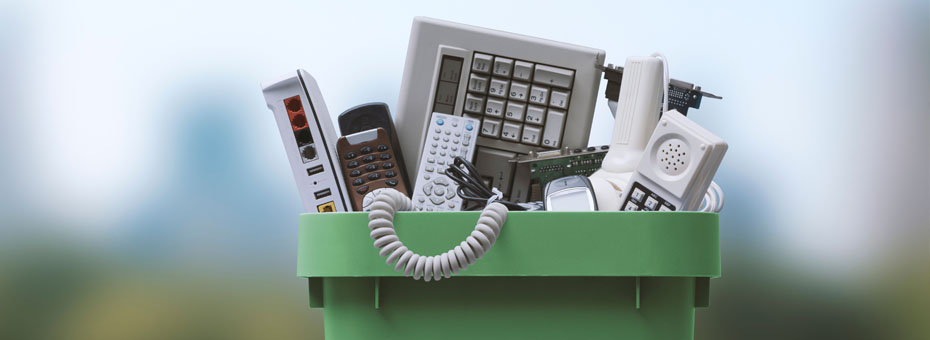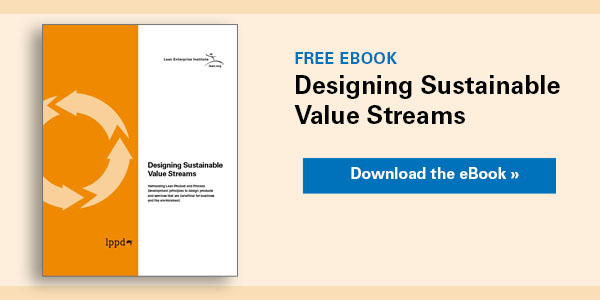Be among the first to get the latest insights from LEI’s Lean Product and Process Development (LPPD) thought leaders and practitioners. This article was delivered to subscribers of The Design Brief, LEI’s newsletter devoted to improving organizations’ innovation capability.
Customers are increasingly putting greater value on the environmental sustainability of the products that they use. Lean Product and Process Development (LPPD) can enable your development team to meet this growing demand by helping them understand the environmental impact of their decisions.
When making design decisions, nearly everyone makes them based on what they think is the best. However, to ensure those decisions are the best for the customer, their business, and the environment, the development teams need to be aligned on the product vision and what criteria to use when making design trade-offs. When creating an environmentally friendly product, this alignment process should include a shared understanding of the product’s potential environmental impact and a process to ensure the team makes design decisions accordingly.
Understanding together to enable better decisions
Following the LPPD principle of Understanding Before Executing, you will want the development team to have a shared understanding of several factors:
- The potential environmental impact of the product.
- The design decisions that lock in the long-term environmental impact of the product.
- The interdependence of design decisions across the entire development team.
- The key criteria for making design decisions.
- The expertise to make the right design decisions.
Life-cycle analysis and predictive life-cycle analysis are methods that can enable the development team to holistically understand the potential environmental impacts of a product across its entire life cycle, from how it is designed, made, used, and handled at end-of-life.
Product Life-Cycle Phases

Another piece of the puzzle is to understand what design decisions will determine the actual environmental impact of your product. Using decision-flow mapping along with life-cycle analysis can enable your team to understand the environmental impact of their design decisions. Typically, the environmental experts within an organization get involved in the development late in the process after the decisions that lock in the long-term environmental impacts have already been made. The decision-flow mapping process enables your development team to understand the interdependencies between decisions and the sequence in which they should make decisions. It also ensures that you involve the right knowledge and expertise at the right time, so your team consciously makes the design decisions with the relevant information before locking in the product’s long-term environmental impact.
Making the right decisions at the right times
Once the development team understands together, LPPD practices can enable the team to work together effectively to make the right decisions at the right times with the right expertise and knowledge involved to deliver successful and environmentally sustainable products. For example, early in the product development process, the team can use a concept paper to align and enroll its members in the product vision, including environmental sustainability. Then throughout the development process, the team can use the concept paper as a guide for making the appropriate trade-offs to deliver on the product vision when making decisions.
The LPPD project management practice of obeya can enable the development team to have the right people involved at the right times to make the right decisions to deliver the product to meet the product vision. Within an obeya, the most important information to drive decision-making and the project flow should be visible to align the development team on what is important for the execution of the project. For example, posting the most relevant information from the concept paper, the product vision, key trade-off criteria, and the decision-flow map ensures the right people are involved at the right time to make decisions.
In addition, an obeya can enable the environmental experts to get involved earlier in the development process, sharing the relevant information on the environmental impact of decisions with the developers before they are made. It also can enable the experts to shift their roles toward supporting the right decisions early in the development process rather than a compliance-checking role after the decisions have been made, which is often how these experts currently operate. The late involvement of sustainability experts often results in less sustainable designs that are locked or require late and costly design changes to improve their environmental sustainability.
Building sustainability principles into your development process
Another LPPD practice to enable the development of environmentally sustainable products is to embed sustainability principles into the product development process. Building knowledge into the product development process can ensure engineers can easily use it. For example, design standards and engineering checklists are commonly used LPPD practices. Incorporating design-for-sustainability principles into these standards and checklists makes it easier for developers to design for sustainability.
Another effective method is to limit the materials and processes that engineers can use in new products to only the most sustainable materials and processes available. These limitations can prevent designers from unintentionally selecting materials and processes with high environmental impacts.
LPPD practices can enable the product development team to understand the potential environmental impacts of their design decisions. Understanding these impacts sets the team up to acquire the appropriate knowledge and involve the right expertise to make the best decisions for the customer, their business, and the environment when developing products.
Designing the Future
An Introduction to Lean Product and Process Development.


